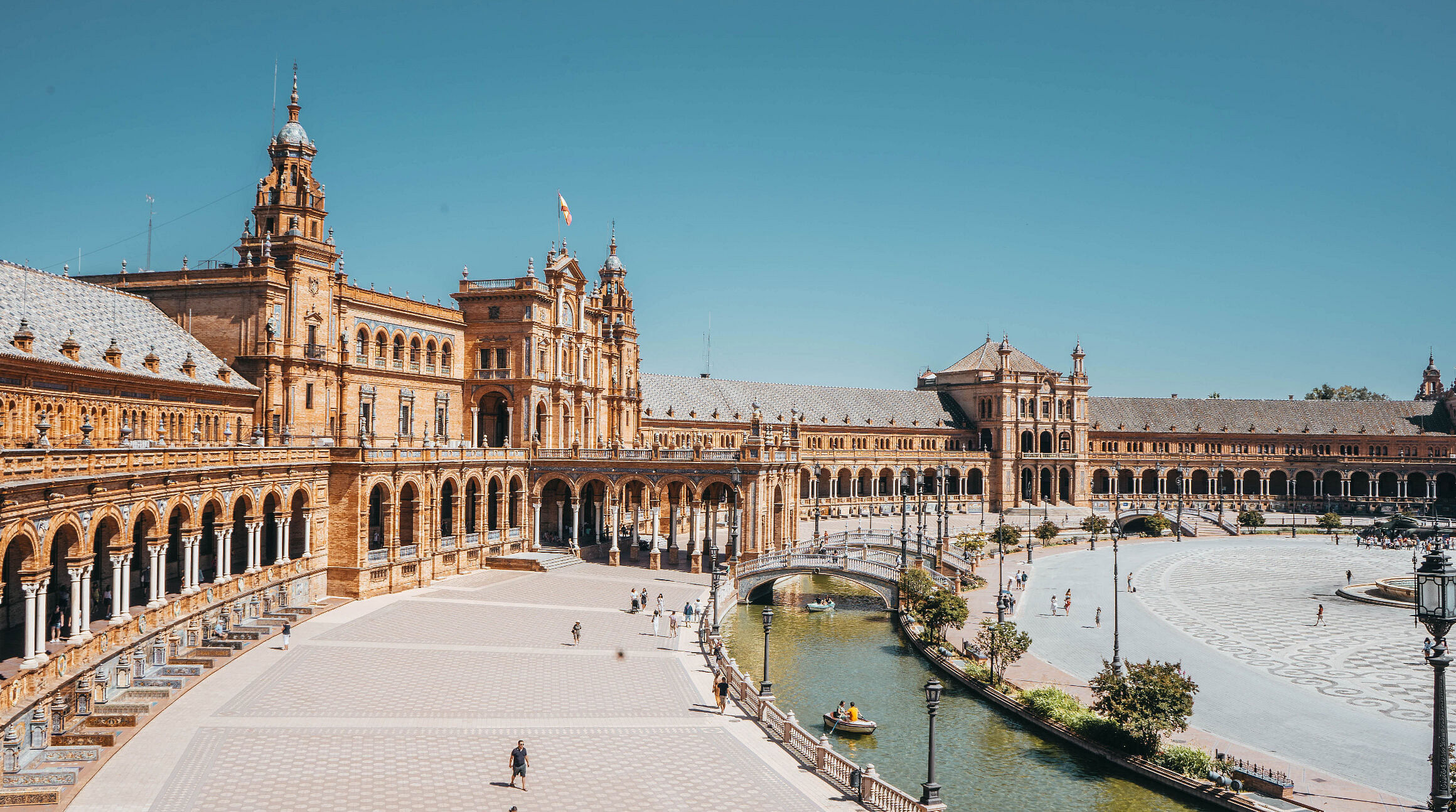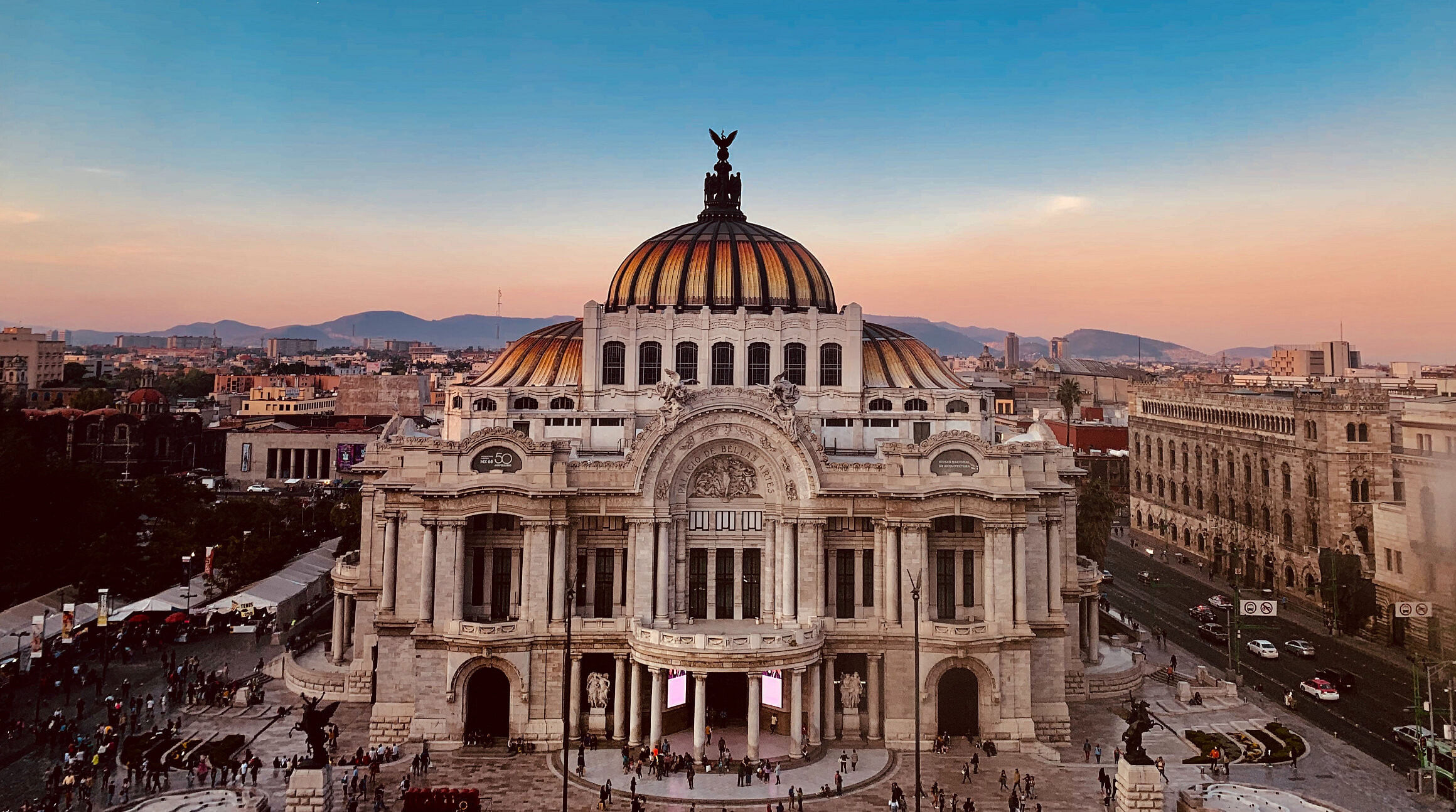No products in the cart.
Uncategorized
The 6 Best Digital Nomad Destinations of 2024 (And Everything You Need to Know to Move There)

The working world is changing — and fast. According to Forbes, 32.6 million Americans will work remotely by 2025. With increased internet access across the globe and the expansion of remote jobs, this generation of workers is no longer living that 9-5 commuter lifestyle. Instead, they’re trading in their cubicles for a backpack, travel eSIMs, and the best digital nomad destinations.
Countries all over the world are catching on to this influx of wanderlust from workers. Croatia and Estonia led the charge, being the first to launch visas specifically for digital nomads in 2020 to help their tourism industry during the pandemic. Now, many programs are being offered to make it easier for people to work abroad. Companies are popping up all over the place, helping digital nomads to bust through the red tape involved, and governments of foreign countries are offering enticing incentives to remote workers to boost tourism — and tax — dollars.
So, if you’ve had ‘travel the world’ as an item on your bucket list and you’ve finally snagged that remote work position or are living the freelancer dream, the good news is that it’s easier than ever. However, there are a few things you have to consider before buying that one-way plane ticket to your dream destination and officially becoming a digital nomad. One of the biggest? Discovering what’s the best digital nomad destination.
In this article, we’ll explain some key things to look for in a digital nomad destination and give you a list of the best places to research if you want to travel while you work. So, grab your Atlas (or, let’s face it, Google Maps), and before you hit “book now” for your flight, read this article all the way through.
In this article:
- What is a digital nomad?
- What is a digital nomad visa?
- How do you choose the best digital nomad destination?
- The 6 best digital nomad destinations
- Stay connected around the world with Airalo
- Best digital nomad destinations faqs
 Freepik
Freepik
What Is a Digital Nomad?
A digital nomad is a remote worker who travels to destinations worldwide while earning a living. That means their office isn’t fixed; they can work in coffee shops, co-working spaces, libraries, or on the beach — in fact, they work just about anywhere as long as they’ve got a reliable internet connection.
This lifestyle offers a lot of benefits to many people. In a recent study of 3,000 remote workers, the top 3 benefits were having a flexible schedule, the flexibility to choose where they live, and the flexibility to choose their work location. That’s a lot of emphasis on flexibility — and we can see why.
What Is a Digital Nomad Visa?
Unfortunately, just because you have the flexibility to work wherever you like doesn’t mean you can work wherever you would like. Each country has its own requirements for digital nomads — the biggest being a digital nomad visa.
A digital nomad visa is a document or a program that allows you to legally work remotely while living away from your country of permanent residence.
If you’re working abroad, you need to not only acquire a digital nomad visa for the countries you visit but also make sure you know the rules inside out and backwards. Most visas will have a certain amount of time you can work in the country and a certain monthly income threshold you have to make.
Each country is different, and while we’re going to give you information on the top 6 best digital nomad destinations, things change pretty quickly in the digital world, so we always recommend doing your own additional research.
 Unsplash
Unsplash
How Do You Choose the Best Digital Nomad Destination?
But how do you choose the best digital nomad destination? Don’t worry, we’re going to help you with this one. It’s such a common question that Visa Guide even came up with an elaborate ranking system.
Figuring out where to go with your newfound freedom can be the fun part, so here are some questions to ask yourself when making your choice.
Does Your Destination Offer a Digital Nomad Visa?
Not all countries offer digital nomad visas, so you’re going to want to start there. The country you’re considering may not have a program set up to allow residents of other countries to stay for longer periods while earning income.
What Are the Income Requirements for the Visa Application?
Many countries want to make sure that you can sustain your life while visiting. If they offer a digital nomad visa, it’s most likely going to come with an income requirement. This means you have to prove that you make the bare minimum amount of money they think you would need to live comfortably in their country.
Does It Have Accessible Internet Access?
Not all countries are created equal when it comes to internet access and speed. If your job requires you to be on a bunch of video meetings throughout the week, that internet connection is going to need to be strong and readily available. Outages are normal in countries that may not have strong internet infrastructure, so make sure to do your research.
An eSIM from Airalo can keep you connected no matter what the internet connection is like at the closest co-working space. Explore the countries that an eSIM from Airalo covers.
Is There a Community of Expats?
We all need a village in our lives. One of the biggest worldwide villages is expats. People connect over shared experiences, and expats all have that one thing in common — being a stranger in a foreign land. Many countries that are popular for digital nomads will have an expat community you can tap into to feel closer to home and create friendships.
What Is the Cost of Living?
Often, people choose to escape to find a slower-paced, more affordable way of living. With inflation on the rise and rents in bigger cities growing every day, digital nomads are on the hunt for a place where they can save their dollars. Make sure to research the cost of food and rent for any country you choose to visit. You don’t want sticker shock when you visit the food market for the first time.
What Is the Weather Like?
While we love a hot day and a sandy beach, snowy mountains may be more your vibe. Knowing what to expect weather-wise — hot, cold, humid, dry, sunny, foggy — is going to make the transition easier on you.
You may have some extra questions to ask yourself based on your dream location, but hopefully, these will get you started.
The 6 Best Digital Nomad Destinations
Now we get to the fun part. Let’s take a look at the top six best digital nomad destinations.
 Unsplash
Unsplash
1. Costa Rica
Costa Rica is known for its wildlife, beautiful scenery, and digital nomads. It has a very friendly digital nomad program that extends the 90-day tourist visa to a full-year working visa. The income threshold is $3,000 USD per month for a solo traveler and $4,000 USD for someone with dependents.
Pros: Because digital nomads have been flocking to Costa Rica for years, internet accessibility, large expat communities, and a high number of working spaces are all big pros to moving to Costa Rica.
Cons: On the flip side, with the inundation of digital nomads, the cost of living in Costa Rica has risen quite a bit in the last ten years. If you’re looking to save money while abroad, this may not be the place for you.
 Unsplash
Unsplash
2. Spain
Visa Guide gives Spain the #1 spot for digital nomad destinations in the world as of 2024. They base this on internet accessibility (very high), income requirement of €2,160 Euros per month (very low), and the incredible weather (very temperate).
Pros: Depending on where you end up in Spain, the cost of living is relatively low. Another huge advantage: Digital nomads who want to put down some roots can extend their visa for up to five years.
Cons: Spain has passed new legislation that says that U.S. national employees can’t apply for this type of visa — only U.S. freelancers who’ve been in business for over 12 months. You must also have a university/college degree or at least three years of work experience in your field.
 Unsplash
Unsplash
3. Mexico
Mexico is a very popular destination for North American nomads. Mexico already has a pretty flexible tourist visa that allows remote workers to work in the country for up to 180 days, but they don’t have a specific digital nomad visa — yet. Once those 180 days run out, you can apply for a temporary residence visa, but it’s much more complicated than a traditional digital nomad visa.
Pros: You can’t beat Mexico’s cost of living — as long as you stay out of the big tourist cities like Cancun and Mexico City. Food is fresh and easily accessible, housing is affordable, the beaches are beautiful, and the expat community is large. This makes much of Mexico an ideal spot for digital nomads.
Cons: The population is growing, and so is the development of housing. Internet infrastructure isn’t always able to keep up with the demand. Outages are a regular thing. Also, there isn’t a good option for people who want to stay past the 180 days to extend their visa unless they want to own property in Mexico.
 Unsplash
Unsplash
4. Croatia
Croatia was at the forefront of offering digital nomad visas. They instituted their program when they noticed a big decline in tourists during the pandemic. Offering an opportunity for people to work remotely and for longer periods of time than a visitor’s visa gave a boost to the tourism industry. The income threshold to work in Croatia is just under €2,600 Euros per month.
Pros: It’s hard to believe how absolutely stunning Croatia is. With its massive coastline, over 1,200 islands, and multiple national parks, you’ll never get tired of the views. Also, because Croatia was one of the first countries to offer digital nomad visas, they have the infrastructure set up to help nomads have an easy stay.
Cons: The population of Croatia is declining, which means accessing essential services — like doctors — can be harder to find. Croatia really does depend on tourism to keep the country running.
 Unsplash
Unsplash
5. Indonesia (Bali)
Bali is a bucket list location for many people. You can surf, hike volcanos, visit the rice fields, or live your own version of ‘Eat, Pray, Love.’ Many digital nomads head to Bali for the beauty alone.
Pros: In case we haven’t already overstated it, Bali is stunningly beautiful. It offers something for everyone. It’s a really popular location for digital nomads, so there are many spaces to work out of and meet your new expat community.
Cons: Oddly enough, Bali doesn’t offer a specific digital nomad visa. A tourist’s visa can be extended to a total of 180 days, and that’s what most remote workers do. The only major rule is that you can only make money from your country of residence. If you sell goods or services in Bali, you’re breaking the tourist visa restrictions.
 Unsplash
Unsplash
6. Portugal
Portugal is a travel gem. If those blue waters, remote islands, and friendly locals aren’t enough of a reason to take your digital nomad life to Portugal, the affordable cost of living may sway you.
Pros: Aside from the spectacular views, a big pro to choosing Portugal is that the Portuguese government has heavily invested in high-speed internet infrastructure to help digital nomads. But really, Portugal has it all. Affordable cost of living, a great expat community, and a temperate climate — this is why it’s on our list.
Cons: The biggest con for Portugal is that the income threshold is on the higher end, coming in at €3,040 Euros for a solo traveler and approximately €4,000 Euros with dependents.
No one place is going to work for everybody. Some people value good food, some need to put their feet in the ocean, some need a strong internet connection to video message with their team, and some want to island-hop or climb mountains or have the comforts of home — like a well-made espresso.
Being away from friends and family is no joke. You want to make sure that you make the right decision for you. Write a list for yourself of everything you would need to feel happy in a different country and then get to Googling. The digital nomad visa is available in so many countries that we’re sure you will find something that ticks all of your boxes.

Stay Connected Around the World With Airalo
Stay connected — without breaking the bank — while you work from anywhere in the world with an eSIM from Airalo. Here are a few ways using an eSIM can benefit you as a digital nomad:
- No roaming fees. eSIM plans are prepaid, so you don’t need to worry about accidental roaming charges while you travel.
- Tether your eSIM data. No Wi-Fi connection? No problem. You can tether your eSIM data to another device, like a tablet or laptop.
- 100% digital. There’s no need to keep track of a physical SIM card for every destination — you can save up to eight digital eSIM profiles on most smartphones.
- Top up your data. Many Airalo eSIM packages have a top-up function, which allows you to top up your data, calls, or messages on the go.
- Share your adventures. Use your eSIM data to send emails, connect with your loved ones, and post on social media in real time.
- Stay connected. You don’t need to rely on a Wi-Fi connection to get online — instead, you can use an eSIM to access data wherever you travel.
Best Digital Nomad Destinations FAQs
Which Countries Have Digital Nomad Visas?
If you want to explore more of the world than our top 6 best digital nomad locations, here are all the countries that offer digital nomad visas — or are in the process:
- Andorra
- Dominican
- Mexico
- Anguilla
- Costa Rica
- Dubai
- Montenegro
- Antigua and Barbuda
- Ecuador
- Aruba
- Argentina
- Estonia
- North Macedonia
- Brazil
- Bermuda
- Georgia
- Montserrat
- Norway
- Bahamas
- Germany
- Cabo Verde
- Indonesia
- South Africa
- Curacao
- Panama
- Portugal
- Barbados
- Greece
- Romania
- Belize
- Hungary
- Saint Lucia
- Cayman Islands
- Columbia
- Iceland
- Seychelles
- Italy
- Spain
- Croatia
- Latvia
- Sri Lanka
- Czechia
- Malta
- Taiwan
- Uruguay
- Cyprus
- Mauritius
- Thailand
What Are the Top Digital Nomad Destinations for 2024?
The top digital nomad destinations for 2024 based on internet accessibility, quality of life, cost of living, income requirements, etc., are:
- Costa Rica
- Spain
- Mexico
- Croatia
- Indonesia
- Portugal
What Do You Need to Become a Digital Nomad in 2024?
There are a couple of essentials you will need if you want to become a digital nomad in 2024. One of these essentials is a digital nomad visa if your destination requires one. Another “can’t leave the house without one” on our list is an eSIM from Airalo so that you can stay connected, no matter the internet availability.
If you’re allowed to work in the country and you’ve got an internet connection, you can begin your digital nomad life in 2024.

